Fleurs du Mal Magazine


Or see the index
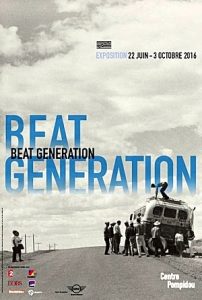 Beat Generation
Beat Generation
Until 3 October 2016
The Centre Pompidou is to present Beat Generation, a novel retrospective dedicated to the literary and artistic movement born in the late 1940s that would exert an ever-growing influence for the next two decades. The theme will be reflected in all the Centre’s activities, with a rich programme of events devised in collaboration with the Bibliothèque Public d’Information and Ircam: readings, concerts, discussions, film screenings, a colloquium, a young people’s programme at Studio 13/16, etc.
Foreshadowing the youth culture and the cultural and sexual liberation of the 1960s, the emergence of the Beat Generation in the years following the Second World War, just as the Cold War was setting in, scandalised a puritan and Mc Carthyite America. Then seen as subversive rebels, the Beats appear today as the representatives of one of the most important cultural movements of the 20th century – a movement the Centre Pompidou’s survey will examine in all its breadth and geographical amplitude, from New York to Los Angeles, from Paris to Tangier.
The Centre Pompidou’s exhibition maps both the shifting geographical focus of the movement and its ever-shifting contours. For the artistic practices of the Beat Generation – readings, performances, concerts and films – testify to a breaking down of artistic boundaries and a desire for interdisciplinary collaboration that puts the singularity of the artist into question. Alongside notable visual artists, mostly representative of the California scene (Wallace Berman, Bruce Conner, George Herms, Jay DeFeo, Jess…), an important place is given to the literary dimension of the movement, to spoken poetry in its relationship to jazz, and more particularly to the Black American poetry (LeRoi Jones, Bob Kaufman…) that remains largely unknown in Europe, like the magazines in which it circulated (Beatitude, Umbra…). Photography was also an important medium, represented here by the productions of Allen Ginsberg and William Burroughs – mostly portraits – and a substantial body of photographs by Robert Frank (Les Américains, From the Bus…), Fred McDarrah, and John Cohen, all taken during the shooting of Pull my Daisy, as well as work by Harold Chapman, who chronicled the life of the Beat Hotel in Paris between 1958 and 1963. The same was true of the films (Christopher MacLaine, Bruce Baillie, Stan Brakhage, Ron Rice…) that would both reflect and document the history and development of the movement.
Exhibition at the Centre Pompidou in Paris until October 3, 2016
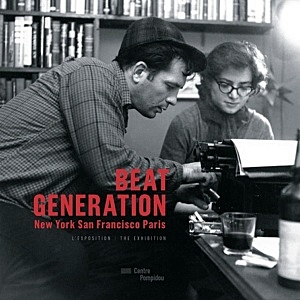 New publication:
New publication:
Beat generation – exhibition album
Movement of literary and artistic inspiration born in the United States in the 1950s, at the initiative of William Burroughs, Allen Ginsberg and Jack Kerouac, the Beat Generation has profoundly influenced contemporary creation.
The book displays the different artworks exhibited along with short explanatory essays. A clear and precise album suitable for a large audience.
Bilingual version French / English.
Binding: Softbound
Language: Bilingual French / English
EAN 9782844267467
Number of pages 60
Number of illustrations 60
Publication date 15/06/2016
Dimensions 27 x 27 cm
Author: Philippe-Alain Michaud
Publisher: Centre Pompidou
€9.50
# Information and schedule about the Beat Generation exhibition on website Centre Pompidou
fleursdumal.nl magazine
More in: #Beat Generation Archives, - Book News, Burroughs, William S., DICTIONARY OF IDEAS, DRUGS & DISEASE & MEDICINE & LITERATURE, Ginsberg, Allen, Kerouac, Jack, Literaire sporen, LITERARY MAGAZINES
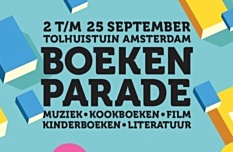 De Boekenparade is hét grootste boekenevenement van 2016 Jaar van het Boek: van 2 t/m 25 september 2016 staan boeken en verhalen centraal. De focus van het festival ligt op beleving en ontmoeting. De Boekenparade belicht op prikkelende wijze het fenomeen boek in al zijn verrassende vormen en biedt een uitgebreid cross-over programma van evenementen, performances, podiumkunsten, muziek, workshops en een expositie.
De Boekenparade is hét grootste boekenevenement van 2016 Jaar van het Boek: van 2 t/m 25 september 2016 staan boeken en verhalen centraal. De focus van het festival ligt op beleving en ontmoeting. De Boekenparade belicht op prikkelende wijze het fenomeen boek in al zijn verrassende vormen en biedt een uitgebreid cross-over programma van evenementen, performances, podiumkunsten, muziek, workshops en een expositie.
Ook Manuscripta, traditioneel de opening van het boekenseizoen, is dit jaar onderdeel van de Boekenparade en vindt plaats op zaterdag 3 september in de Tolhuistuin.
Pepijn Lanen, Herman Koch en Herman Brusselmans verzorgen de openingsact van de Boekenparade. Verder geven onder meer acte de présence: Griet Op de Beeck, Abdelkader Benali, Michael Berg, Marion Bloem, Joris van Casteren, Renate Dorrestein, Michel van Egmond, Sophie Hannah, Astrid Harrewijn, Patrick van Hees, Arno Kantelberg, Geert Mak, Isa Maron, Tosca Menten, Nelleke Noordervliet, Christine Otten, Hagar Peeters, Dokter Pol, Ntjam Rosie, Mirjam Rotenstreich, Geronimo Stilton en Harmen van Straaten.
In de weekenden vinden aan de IJpromenade tegenover Amsterdam CS grote evenementen plaats en ook doordeweeks zijn er programma’s. De eerste programma’s (het concert met Pepijn Lanen en High Tea & Books) zijn bekend. Op 9 augustus volgt de precieze line-up van de overige events. In de kalender hieronder wordt een tipje van de sluier opgelicht.
Het hart van de Boekenparade is de – culturele en kunstzinnige broed- en ontmoetingsplaats – Tolhuistuin. Daarnaast is er ook programmering in filmmuseum EYE.
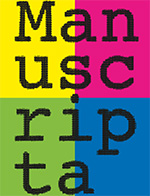 De Boekenparade is, mede door de diverse programmering en de doorlopende exposities, aantrekkelijk voor jong en oud, uit de stad of op bezoek, van laaggeletterd tot boekenwurm: de Boekenparade is voor iedereen. Een dagje Boekenparade is een ervaring, beginnend bij aankomst op het Centraal Station, gevolgd door de pont ofwel de heenenweer, wandelend langs de verschillende locaties en podia waar meegedaan, gegeten, bekeken en geluisterd kan worden. Met één rode draad: het verhaal en het boek als uitgangspunt voor deze ‘reis’.
De Boekenparade is, mede door de diverse programmering en de doorlopende exposities, aantrekkelijk voor jong en oud, uit de stad of op bezoek, van laaggeletterd tot boekenwurm: de Boekenparade is voor iedereen. Een dagje Boekenparade is een ervaring, beginnend bij aankomst op het Centraal Station, gevolgd door de pont ofwel de heenenweer, wandelend langs de verschillende locaties en podia waar meegedaan, gegeten, bekeken en geluisterd kan worden. Met één rode draad: het verhaal en het boek als uitgangspunt voor deze ‘reis’.
02 sept: OFFICIËLE OPENING
02 sept: NAAMLOOS – DE FAVORIETE AVOND VAN PEPIJN LANEN
03 sept: MANUSCRIPTA
04 sept: DIES IST WAS WIR TEILEN
05 sept: START VAN DE WEEK VAN DE ALFABETISERING
09 sept: MEDIABORREL NOORD en DE BETERE BOEKENSHOW
10 sept: HIGH TEA & BOOKS
11 sept: REAL MEN READ & Listen
12 sept: THRILLERS: 100 JAAR HERCULE POIROT
14 sept: CPI KONINKLIJKE WÖHRMANN
15 sept: BOEKHANDEL ATHENAEUM 50 JAAR
15 sept: MORGENLANDFESTIVAL
16 sept: YALBAL
17 sept: YA-WEEKENDER: SATURDAY
17 sept: BOEKVERFILMINGEN
18 sept: Kinderboekenparade aan ’t IJ
20 sept: FRAMER FRAMED
21 sept: MÖHLEMANNS en KÖHLEMANNS
22 sept: KICK-OFF RENEW THE BOOK
23 sept: MIJN WOORDEN ZIJN MUZIEK en AC/DJ
24 sept: SPANNENDE WANDELING EN DOKTER POL
25 sept: KOOKBOEKENFESTIVAL
25 sept: Lancering van lees.magazine.bol
25 sept: NIGHTWATCH MET DIMITRI VERHULST
# Meer info op website Boekenparade 2016
 De Tolhuistuin, adres Tolhuistuin: IJpromenade 2, Amsterdam
De Tolhuistuin, adres Tolhuistuin: IJpromenade 2, Amsterdam
De Tolhuistuin ligt recht tegenover het Centraal Station van Amsterdam. Bij de uitgang aan de Noordzijde neem je de gratis pont ‘Buiksloterwegveer’ om het IJ over te steken.
Pont: Vanaf Amsterdam CS gaat iedere 5 minuten een gratis pont naar de overkant van het IJ (Buiksloterweg, reisduur 3 minuten). De pont vaart dag en nacht, 24 uur per dag.
Bus: Vanuit Amsterdam-Noord is de Tolhuistuin te bereiken met bus 38. De bus stopt direct naast de Tolhuistuin. Op zaterdag rijdt bus 38 om de 12 minuten. Op zondag rijdt bus 38 om het half uur.
Stichting Tolhuistuin
Tolhuisweg 5 – 1031 CL Amsterdam
www.stichtingtolhuistuin.nl
fleursdumal.nl magazine
More in: - Book Lovers, - Book News, Art & Literature News, Herman Brusselmans, Literary Events, Peeters, Hagar, Renate Dorrestein

Round the Red Lamp: Being Facts and Fancies of Medical Life by Sir Arthur Conan Doyle
Table of Contents
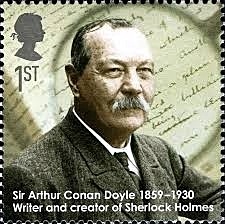
The Preface
Behind the Times. (#01)
His First Operation. (#02)
A Straggler of ‘15. (#03)
The Third Generation. (#04)
A False Start. (#05)
The Curse of Eve. (#06)
Sweethearts. (#07)
A Physiologist’s Wife. (#08)
The Case of Lady Sannox. (#09)
A Question of Diplomacy. (#10)
A Medical Document. (#11)
Lot No. 249. (#12)
The Los Amigos Fiasco. (#13)
The Doctors of Hoyland. (#14)
The Surgeon Talks. (#15)
The Preface.
[Being an extract from a long and animated correspondence with a friend in America.]
I quite recognise the force of your objection that an invalid or a woman in weak health would get no good from stories which attempt to treat some features of medical life with a certain amount of realism. If you deal with this life at all, however, and if you are anxious to make your doctors something more than marionettes, it is quite essential that you should paint the darker side, since it is that which is principally presented to the surgeon or physician. He sees many beautiful things, it is true, fortitude and heroism, love and self-sacrifice; but they are all called forth (as our nobler qualities are always called forth) by bitter sorrow and trial. One cannot write of medical life and be merry over it.
Then why write of it, you may ask? If a subject is painful why treat it at all? I answer that it is the province of fiction to treat painful things as well as cheerful ones. The story which wiles away a weary hour fulfils an obviously good purpose, but not more so, I hold, than that which helps to emphasise the graver side of life. A tale which may startle the reader out of his usual grooves of thought, and shocks him into seriousness, plays the part of the alterative and tonic in medicine, bitter to the taste but bracing in the result. There are a few stories in this little collection which might have such an effect, and I have so far shared in your feeling that I have reserved them from serial publication. In book-form the reader can see that they are medical stories, and can, if he or she be so minded, avoid them.
Yours very truly,
A. CONAN DOYLE
P.S.—You ask about the Red Lamp. It is the usual sign of the general practitioner in England.
 Behind the Times
Behind the Times
by Arthur Conan Doyle
My first interview with Dr. James Winter was under dramatic circumstances. It occurred at two in the morning in the bedroom of an old country house. I kicked him twice on the white waistcoat and knocked off his gold spectacles, while he with the aid of a female accomplice stifled my angry cries in a flannel petticoat and thrust me into a warm bath. I am told that one of my parents, who happened to be present, remarked in a whisper that there was nothing the matter with my lungs. I cannot recall how Dr. Winter looked at the time, for I had other things to think of, but his description of my own appearance is far from flattering. A fluffy head, a body like a trussed goose, very bandy legs, and feet with the soles turned inwards—those are the main items which he can remember.
From this time onwards the epochs of my life were the periodical assaults which Dr. Winter made upon me. He vaccinated me; he cut me for an abscess; he blistered me for mumps. It was a world of peace and he the one dark cloud that threatened. But at last there came a time of real illness—a time when I lay for months together inside my wickerwork-basket bed, and then it was that I learned that that hard face could relax, that those country-made creaking boots could steal very gently to a bedside, and that that rough voice could thin into a whisper when it spoke to a sick child.
And now the child is himself a medical man, and yet Dr. Winter is the same as ever. I can see no change since first I can remember him, save that perhaps the brindled hair is a trifle whiter, and the huge shoulders a little more bowed. He is a very tall man, though he loses a couple of inches from his stoop. That big back of his has curved itself over sick beds until it has set in that shape. His face is of a walnut brown, and tells of long winter drives over bleak country roads, with the wind and the rain in his teeth. It looks smooth at a little distance, but as you approach him you see that it is shot with innumerable fine wrinkles like a last year’s apple. They are hardly to be seen when he is in repose; but when he laughs his face breaks like a starred glass, and you realise then that though he looks old, he must be older than he looks.
How old that is I could never discover. I have often tried to find out, and have struck his stream as high up as George IV and even the Regency, but without ever getting quite to the source. His mind must have been open to impressions very early, but it must also have closed early, for the politics of the day have little interest for him, while he is fiercely excited about questions which are entirely prehistoric. He shakes his head when he speaks of the first Reform Bill and expresses grave doubts as to its wisdom, and I have heard him, when he was warmed by a glass of wine, say bitter things about Robert Peel and his abandoning of the Corn Laws. The death of that statesman brought the history of England to a definite close, and Dr. Winter refers to everything which had happened since then as to an insignificant anticlimax.
But it was only when I had myself become a medical man that I was able to appreciate how entirely he is a survival of a past generation. He had learned his medicine under that obsolete and forgotten system by which a youth was apprenticed to a surgeon, in the days when the study of anatomy was often approached through a violated grave. His views upon his own profession are even more reactionary than in politics. Fifty years have brought him little and deprived him of less. Vaccination was well within the teaching of his youth, though I think he has a secret preference for inoculation. Bleeding he would practise freely but for public opinion. Chloroform he regards as a dangerous innovation, and he always clicks with his tongue when it is mentioned. He has even been known to say vain things about Laennec, and to refer to the stethoscope as “a new-fangled French toy.” He carries one in his hat out of deference to the expectations of his patients, but he is very hard of hearing, so that it makes little difference whether he uses it or not.
He reads, as a duty, his weekly medical paper, so that he has a general idea as to the advance of modern science. He always persists in looking upon it as a huge and rather ludicrous experiment. The germ theory of disease set him chuckling for a long time, and his favourite joke in the sick room was to say, “Shut the door or the germs will be getting in.” As to the Darwinian theory, it struck him as being the crowning joke of the century. “The children in the nursery and the ancestors in the stable,” he would cry, and laugh the tears out of his eyes.
He is so very much behind the day that occasionally, as things move round in their usual circle, he finds himself, to his bewilderment, in the front of the fashion. Dietetic treatment, for example, had been much in vogue in his youth, and he has more practical knowledge of it than any one whom I have met. Massage, too, was familiar to him when it was new to our generation. He had been trained also at a time when instruments were in a rudimentary state, and when men learned to trust more to their own fingers. He has a model surgical hand, muscular in the palm, tapering in the fingers, “with an eye at the end of each.” I shall not easily forget how Dr. Patterson and I cut Sir John Sirwell, the County Member, and were unable to find the stone. It was a horrible moment. Both our careers were at stake. And then it was that Dr. Winter, whom we had asked out of courtesy to be present, introduced into the wound a finger which seemed to our excited senses to be about nine inches long, and hooked out the stone at the end of it. “It’s always well to bring one in your waistcoat-pocket,” said he with a chuckle, “but I suppose you youngsters are above all that.”
We made him president of our branch of the British Medical Association, but he resigned after the first meeting. “The young men are too much for me,” he said. “I don’t understand what they are talking about.” Yet his patients do very well. He has the healing touch—that magnetic thing which defies explanation or analysis, but which is a very evident fact none the less. His mere presence leaves the patient with more hopefulness and vitality. The sight of disease affects him as dust does a careful housewife. It makes him angry and impatient. “Tut, tut, this will never do!” he cries, as he takes over a new case. He would shoo Death out of the room as though he were an intrusive hen. But when the intruder refuses to be dislodged, when the blood moves more slowly and the eyes grow dimmer, then it is that Dr. Winter is of more avail than all the drugs in his surgery. Dying folk cling to his hand as if the presence of his bulk and vigour gives them more courage to face the change; and that kindly, windbeaten face has been the last earthly impression which many a sufferer has carried into the unknown.
When Dr. Patterson and I—both of us young, energetic, and up-to-date—settled in the district, we were most cordially received by the old doctor, who would have been only too happy to be relieved of some of his patients. The patients themselves, however, followed their own inclinations—which is a reprehensible way that patients have—so that we remained neglected, with our modern instruments and our latest alkaloids, while he was serving out senna and calomel to all the countryside. We both of us loved the old fellow, but at the same time, in the privacy of our own intimate conversations, we could not help commenting upon this deplorable lack of judgment. “It’s all very well for the poorer people,” said Patterson. “But after all the educated classes have a right to expect that their medical man will know the difference between a mitral murmur and a bronchitic rale. It’s the judicial frame of mind, not the sympathetic, which is the essential one.”
I thoroughly agreed with Patterson in what he said. It happened, however, that very shortly afterwards the epidemic of influenza broke out, and we were all worked to death. One morning I met Patterson on my round, and found him looking rather pale and fagged out. He made the same remark about me. I was, in fact, feeling far from well, and I lay upon the sofa all the afternoon with a splitting headache and pains in every joint. As evening closed in, I could no longer disguise the fact that the scourge was upon me, and I felt that I should have medical advice without delay. It was of Patterson, naturally, that I thought, but somehow the idea of him had suddenly become repugnant to me. I thought of his cold, critical attitude, of his endless questions, of his tests and his tappings. I wanted something more soothing—something more genial.
“Mrs. Hudson,” said I to my housekeeper, “would you kindly run along to old Dr. Winter and tell him that I should be obliged to him if he would step round?”
She was back with an answer presently. “Dr. Winter will come round in an hour or so, sir; but he has just been called in to attend Dr. Patterson.”
Sir Arthur Conan Doyle (1859 – 1930)
Round the Red Lamp: Being Facts and Fancies of Medical Life
Behind the Times. (#01)
fleursdumal.nl magazine
More in: Doyle, Arthur Conan, Doyle, Arthur Conan, DRUGS & DISEASE & MEDICINE & LITERATURE, Round the Red Lamp
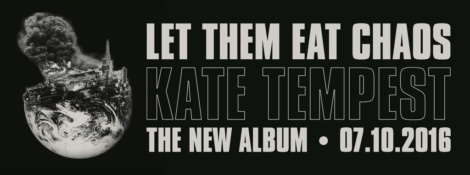
Kate Tempest vecht met twee wapens; haar pen en haar stem. Als artiest won ze meerdere poetry slams en bracht in 2014 als rapper haar tweede album ‘Everybody Down’ uit. Daarnaast publiceerde ze als schrijfster een dichtbundel en een roman en schreef tussendoor nog een toneelstuk. Op het podium brengt Kate Tempest verhalen tot leven met haar unieke mix van indie-hiphop vol rauwe, poëtische raps over het grauwe stadsleven in Londen. Tekstueel één van de meest interessante en urgente lyricisten van dit moment.
KATE TEMPEST
donderdag 10 november 2016 – 19:30 uur
The Max
Melkweg
Lijnbaansgracht 234a
1017 PH Amsterdam
Telefoon: 020-5318181
Verkoop start vrijdag 19 aug
# Meer info op website Melkweg Amsterdam
fleursdumal.nl magazine
More in: #Archive A-Z Sound Poetry, #More Poetry Archives, Archive S-T, Art & Literature News, Kate/Kae Tempest, Poetry Slam, STREET POETRY, Tempest, Kate/Kae, THEATRE

Fiep Westendorp: een feest voor het oog
# Tekeningen, reclame en heel veel andere blikvangers van Nederlands bekendste illustratrice # Tentoonstelling nog te zien t/m 23 oktober 2016 in Museum Meermanno in Den Haag
Fiep Westendorp maakte de bekende illustraties bij de verhalen van Jip en Janneke, Floddertje, Pim & Pom en Pluk van de Petteflet. De tentoonstelling is naast dit bekende werk ook een kennismaking met de andere kant van Fiep Westendorp: reclamewerk, affiches en boekomslagen die zij gedurende haar 60-jarige carrière maakte. Veel van deze originele tekeningen zijn nog nooit eerder aan het publiek getoond. De tentoonstelling is ook de officiële aftrap van het Fiep-jaar, het jaar dat Fiep Westendorp honderd jaar geleden werd geboren en dat gevierd wordt met vele activiteiten.
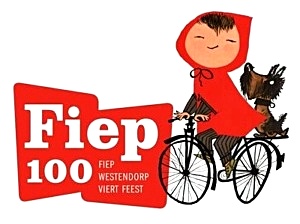 In de tentoonstelling komen o.a. reclamewerk voor de KLM, voorlichtingsbrochures voor het Zuivelbureau en de NVSH en vroeg illustratiewerk waaronder vele boekcovers en affiches aan bod. Twintig jaar lang, van 1948 tot 1968, werkte Fiep Westendorp voor de vrouwenpagina van het Parool. Bij de soms serieuze artikelen van schrijfsters als Harriët Freezer en Annie M.G. Schmidt maakte zij juist humoristische tekeningen. Voor de bundeling van deze columns maakte Fiep Westendorp ook de boekomslagen.
In de tentoonstelling komen o.a. reclamewerk voor de KLM, voorlichtingsbrochures voor het Zuivelbureau en de NVSH en vroeg illustratiewerk waaronder vele boekcovers en affiches aan bod. Twintig jaar lang, van 1948 tot 1968, werkte Fiep Westendorp voor de vrouwenpagina van het Parool. Bij de soms serieuze artikelen van schrijfsters als Harriët Freezer en Annie M.G. Schmidt maakte zij juist humoristische tekeningen. Voor de bundeling van deze columns maakte Fiep Westendorp ook de boekomslagen.
Voor de Illustratie Biënnale, gesponsord door de Fiep Westendorp Foundation, vroeg de organisatie tien illustratoren een omslagillustratie te maken voor hun favoriete boek. Deze omslagen zijn te zien in de tentoonstelling. Eens in de twee jaar bekroont de Fiep Westendorp Foundation werk van jonge illustratoren. Van hun werk zijn filmpjes te zien die inzicht geven in het creatieve proces.
Kinderen en volwassenen kunnen samen van deze tentoonstelling genieten. Voor kinderen is er een route met speelse opdrachten. In een speciale tekenkamer kan de bezoeker zelf aan de slag. Hoe komt een boekillustratie tot stand? Wat maakt een illustratie van Fiep Westendorp zo krachtig en herkenbaar? De activiteiten zijn opgenomen in de agenda van Museum Meermanno.
De tentoonstelling is een samenwerking met Fiep Amsterdam bv, samensteller is directeur drs. Gioia Smid. Met dank aan Fiep Amsterdam bv, de Fiep Westendorp Foundation, het Mondriaanfonds, het VSB fonds en Stichting Zabawas.
Langs de bibliotheken
Om zoveel mogelijk mensen te laten genieten van het werk van Fiep Westendorp organiseert Museum Meermanno samen met Fiep Amsterdam bv naast deze tentoonstelling een compacte bibliotheek-expositie die het verhaal vertelt van Fiep Westendorp als illustrator. Deze tentoonstelling reist van mei 2016 tot eind 2017 langs tachtig bibliotheken door het hele land.
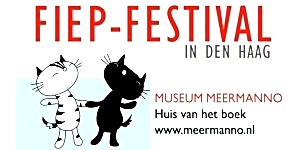 2016 Jubileumjaar Fiep
2016 Jubileumjaar Fiep
Op 17 december 2016 is het 100 jaar geleden dat Fiep Westendorp werd geboren. Het werk van de illustratrice is nog altijd springlevend. Haar tekeningen hebben al vele generaties een bijzondere plek in de harten van jong en oud. Vanaf juni 2016 tot en met december 2017 wordt de 100ste verjaardag van Fiep Westendorp in heel Nederland gevierd met een jubileumjaar vol activiteiten.
De tentoonstelling in Museum Meermanno en de reizende tentoonstelling langs de bibliotheken vormen de aftrap voor het Fiep-jaar, waarin ook de Fiep-bus, een vrolijk gedecoreerde dubbeldekker, door het hele land reist.
# Zie voor het hele programma www.100jaarfiepwestendorp.nl
Museum Meermanno | Huis van het boek
Prinsessegracht 30
2514 AP Den Haag
T 070 34 62 700
Dinsdag t/m zondag van 11.00 tot 17.00 uur geopend.
# Meer info op website Museum Meermanno
fleursdumal.nl magazine
More in: Annie M.G. Schmidt, Art & Literature News, Children's Poetry, Exhibition Archive, Illustrators, Illustration
Vijf films in de race voor Parel voor de Beste Boekverfilming 2016
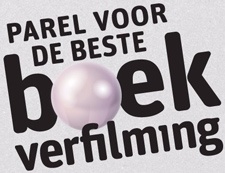 Beyond Sleep, De Helleveeg, Knielen op een bed violen, Schone handen en Publieke Werken dingen mee naar de Parel, de publieksprijs voor de Beste Boekverfilming. Vanaf vandaag kan iedereen tot en met 15 september via een website stemmen op zijn favoriet. Op 16 september wordt op Film by the Sea, het festival voor film en literatuur in Vlissingen, de Parel uitgereikt aan de film die de meeste stemmen heeft behaald.
Beyond Sleep, De Helleveeg, Knielen op een bed violen, Schone handen en Publieke Werken dingen mee naar de Parel, de publieksprijs voor de Beste Boekverfilming. Vanaf vandaag kan iedereen tot en met 15 september via een website stemmen op zijn favoriet. Op 16 september wordt op Film by the Sea, het festival voor film en literatuur in Vlissingen, de Parel uitgereikt aan de film die de meeste stemmen heeft behaald.
De vijf nominaties zijn door bezoekers van Pathé gekozen uit het aanbod aan verfilmingen van oorspronkelijk Nederlandstalige boeken, die uitkwamen tussen 1 juli 2015 en 31 juli 2016. Vorig jaar ontving Still Alice, gebaseerd op het boek Ik mis mezelf van Lisa Genova, de Parel voor de beste Boekverfilming. Dit jaar dingen alleen verfilmingen van oorspronkelijk Nederlandstalige boeken mee naar de Parel.
 De vijf films zijn opnieuw te zien in een groot aantal theaters. Kijk voor meer informatie op www.pathe.nl/parel. Tijdens Film by the Sea, van 9 t/m 18 september, worden naast de genomineerde films, ook I Nostri Ragazzi, J. Kessels,- The Novel en Problemski Hotel vertoond.
De vijf films zijn opnieuw te zien in een groot aantal theaters. Kijk voor meer informatie op www.pathe.nl/parel. Tijdens Film by the Sea, van 9 t/m 18 september, worden naast de genomineerde films, ook I Nostri Ragazzi, J. Kessels,- The Novel en Problemski Hotel vertoond.
Kijk voor meer informatie op www.filmbythesea.nl
Boek en film
Boek en film gaan heel goed samen. Aan menig beroemde film gaat vaak een even beroemd boek vooraf. Denk aan klassiekers als Turks Fruit, Doctor Zhivago, The English Patient en Harry Potter. Of de nieuwe verfilming van De GVR die momenteel voor een verkoopsucces zorgt voor het gelijknamige boek van Roald Dahl.
De genomineerde films voor de Parel zijn gebaseerd op de volgende boeken: Nooit meer slapen (Beyond Sleep), van W. F. Hermans (De Bezige Bij, 1966), De helleveeg van A. F. Th. van der Heijden (De Bezige Bij, 2013), Knielen op een bed violen van Jan Siebelink (De Bezige Bij, 2005), Schone handen van René Appel (Ambo|Anthos, 2007) en Publieke werken van Thomas Rosenboom (Querido, 1999).
Nominaties 2016
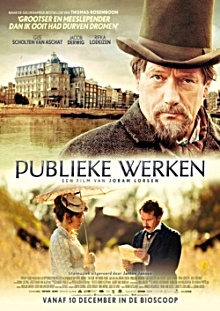 Publieke werken
Publieke werken
Amsterdam, 1888: de getergde vioolbouwer Vedder moet het veld ruimen als zijn huisje moet wijken voor het geplande Victoria Hotel. Zijn overmoedige neef Anijs, apotheker te Hoogeveen, heeft zich door ongeoorloofd medisch handelen ernstig in de nesten gewerkt en zoekt een uitweg.
Filmdistributeur: September Film Distribution
Boektitel: Publieke werken
Auteur boek: Thomas Rosenboom
Uitgeverij: Querido
 Schone handen
Schone handen
Sylvia en Eddie hebben samen twee kinderen. Ze wonen in een groot pand in Amsterdam-Zuid en het ontbreekt hen aan niets. Er is één levensgroot probleem: het vele geld dat Eddie binnenbrengt is crimineel geld. Sylvia heeft zijn activiteiten altijd geaccepteerd, maar haar geweten begint te knagen.
Filmdistributeur: Dutch Filmworks BV
Boektitel: Schone handen
Auteur boek: René Appel
Uitgeverij: Ambo|Anthos
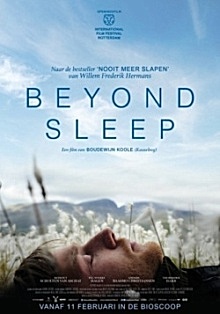 Beyond sleep
Beyond sleep
Nooit meer slapen is het verhaal van de jonge geoloog Alfred Issendorf, die in het moerassige noorden van Noorwegen onderzoek wil verrichten om de hypothese van zijn leermeester en promotor Sibbelee te staven. Issendorf is ambitieus: hij hoopt dat hem op deze reis iets groots te wachten staat.
Filmdistributeur: September Film Distribution
Boektitel: Nooit meer slapen
Auteur boek: Willem Frederik Hermans
Uitgeverij: De Bezige Bij
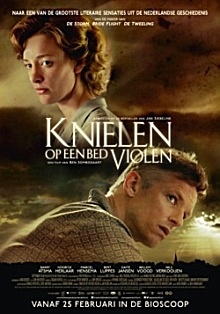 Knielen op een bed violen
Knielen op een bed violen
Op een beslissend punt in zijn volwassen bestaan heeft Hans Sievez een diep-religieuze ervaring; hij is ervan overtuigd voor een kort moment in direct contact met God te hebben gestaan. In de daarop volgende zoektocht naar zingeving en het eeuwige leven verliest hij het zicht op de werkelijkheid en het contact met zijn omgeving. De relatie met zijn vrouw en zoons komt onder grote druk te staan.
Filmdistrib.: September FilmDistrib.
Boektitel: Knielen op een bed violen
Auteur boek: Jan Siebelink
Uitgeverij: De Bezige Bij
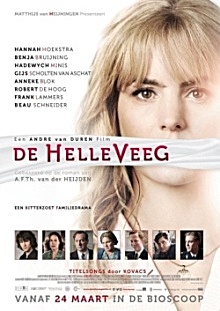 De helleveeg
De helleveeg
Tiny lijdt behalve aan smetvrees ook aan een dwangmatig scherpe tong. Voor Albert is tante Tiny, schertsend Tientje Poets genoemd, even afschrikwekkend als intrigerend. Eenmaal zelf volwassen geworden stuurt Albert aan op een grote confrontatie, waarbij eindelijk alle familiegeheimen aan het licht komen.
Filmdistributeur: eOne
Boektitel: De helleveeg
Auteur boek: A.F.Th. van der Heijden
Uitgeverij: De Bezige Bij
# Stemmen kan op website Besteboekverfilming
fleursdumal.nl magazine
More in: A.F.Th. van der Heijden, Art & Literature News, AUDIO, CINEMA, RADIO & TV, Jan Siebelink, WF Hermans
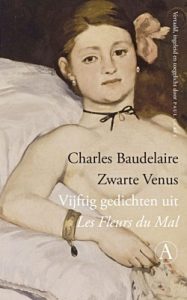 Zwarte Venus
Zwarte Venus
Vijftig gedichten uit Les Fleurs du Mal van Charles Baudelaire
Met Les Fleurs du Mal (1857) van Charles Baudelaire blies er een nieuwe wind door de Franse poëzie. Zijn bloemen van het kwaad wasemden schoonheid en verderf uit. Voor zijn Zwarte Venus, de mulattin Jeanne Duval, trok de dichter alle erotische registers open. Thema’s als prostitutie, sadisme en fetisjisme schokten de goegemeente zozeer dat een Parijse rechtbank hem prompt veroordeelde.
Deze bloemlezing biedt de vijftig beste verzen uit de bundel. Meestervertaler Paul Claes brengt een eerbetoon aan de volmaakte versvorm, de suggestieve klankeffecten en de associatieve beeldspraak van het origineel. De uitwaaierende symboliek maakt elk gedicht volgens de criticus Lloyd James Austin ‘een raam dat uitzicht biedt op het oneindige’.
Een inleiding, een biografie en een commentaar vervolledigen deze poëtische presentatie van de grootste Franse symbolist.
Auteur: Charles Baudelaire
Vertaler: Paul Claes
Uitgeverij: Athenaeum
Paperback, 176 pagina’s
ISBN: 9789025303952
Prijs: € 17,50
fleursdumal.nl magazine
More in: - Book News, Archive A-B, Archive C-D, Art & Literature News, Les Fleurs du Mal, TRANSLATION ARCHIVE
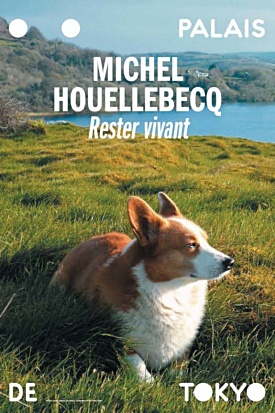 Michel Houellebecq ‘Rester vivant’ in: Le Palais de Tokyo Paris
Michel Houellebecq ‘Rester vivant’ in: Le Palais de Tokyo Paris
This is not a show “about” Michel Houellebecq, but a show “by” Michel Houellebecq, demonstrating how the writer has produced a form that contributes to the reinvention of exhibitions, by mixing up literature and photography, between fact and fiction
Poet, essayist, novelist and filmmaker, Michel Houellebecq has always had close ties with the cinema and the world of the visual arts, which have accompanied and extended his reflexions since the start of his career, as the frequent allusions to them in his novels attest.
This show is a scenario, leading visitors through the writer’s obsessions. Made up of sounds, photographs, installations and films he has conceived, as well as the presence of several guest artists (Robert Combas, Raphaël Sohier, Renaud Marchand and Maurice Renoma) it will offer an immersion into the world and mind of the protean creator who is Michel Houellebecq.
Curator : Jean de Loisy
An issue of the magazine PALAIS is entirely dedicated to the exhibition. Copublished with Flammarion.
An associated program will propose extensions to the exhibitions.
Exhibition From 23/06/2016 to 11/09/2016
Open every day except Tuesdays, from noon until midnight
 Michel Houellebecq
Michel Houellebecq
Michel Houellebecq is, since the 1990s, one of the contemporary authors of French language the most translated and read in the world.
“Michel Thomas was born on the French island Réunion in 1958, his mother was a doctor and his father a mountain guide. His early years were marked by frequent moves (Savoy, Algeria, back to Réunion). His life gained a certain stability after his parents’ divorce, when, at the age of six, he went to live with his paternal grandmother (whose maiden name, Houellebecq, he adopted as his penname).
His childhood was spent in Dicy, in the Yonne. Then his teenage years in Villiers-sur-Morin, in Seine-et-Marne.
After a high-school diploma, which he passed at the age of seventeen, he continued his education in Paris where, five years later, he qualified as an agronomist (specialising in vegetal ecology).
There then followed periods of unemployment intercut with periods of work (firstly to do with agronomics; then mostly for IT service providers).
1991 saw him publish his first book, as well become an administrative secretary at the Assemblée Nationale.
There, he had a brief career in the IT department. In 1996 he took unpaid leave for personal reasons, before resigning in 2008.”
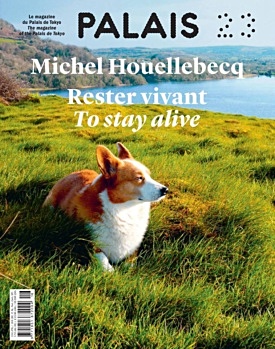 Magazine PALAIS #23
Magazine PALAIS #23
PALAIS magazine is dedicating its issue 23 to Michel Houellebecq’s exhibition “Rester vivant”, presented at the Palais de Tokyo from 23 June to 12 September 2016. This is an exceptional event, because it is the first large-scale show devoted to Michel Houellebecq as an artist. This is also a special issue of PALAIS magazine with Michel Houellebecq as guest editor-in-chief.
This issue of PALAIS magazine follows the organisation of the exhibition in chapters. Thanks to a series of unpublished interviews with Michel Houellebecq, a selection of his writings (essays, poems, novel extracts) and texts by guest authors, the issue provides a discovery of his visual universe, and its intertwining with the many creative forms which the writer uses (music, cinema, performance…).
Contents of this issue: photographs and a selection of texts by Michel Houellebecq as well as a series of interviews between Michel Houellebecq and Jean de Loisy, Yan Céh, Robert Combas (edited by Richard Leydier), Benoît Delépine, Nelly Kaprièlian, an essay by Stéphanie Moisdon and portfolios by Robert Combas, Marie-Pierre Gauthier and Renaud Marchand.
This issue of PALAIS magazine has been co-published with Flammarion.
About Michel Houellebecq’s exhibition “Rester vivant”
Bilingual (French & English)
192 pages in color;
Format : 285 x 225 mm
ISSN 1 951-672X
ISBN 978-2-84711-061-6
15 € (FRANCE)
Palais de Tokyo
13 Avenue du Président Wilson,
75116 Paris, France
# More info on website Palais de Tokyo
fleursdumal.nl magazine
More in: - Book News, FDM in Paris, Histoire de France, Michel Houellebecq, Photography
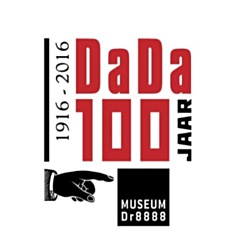 Museum Dr8888 viert 100 jaar Dada
Museum Dr8888 viert 100 jaar Dada
De tentoonstelling is nog tot en met 18 september 2016 te zien.
De tentoonstelling Holland Dada and the International Context sluit aan bij de mondiale viering van de oprichting van de Dada-beweging in 1916. Museum Dr8888 heeft dankzij een uitgebreid internationaal netwerk de hand weten te leggen op prachtige collecties van Dada-kunstenaars uit diverse landen als Frankrijk, België en Duitsland. De tentoonstelling toont topwerken van o.a. Hans Arp, Marcel Duchamp, Kurt Schwitters, Man Ray en Francis Picabia.
Holland Dada and the International Context is opgebouwd in hoofdstukken die corresponderen met steden waar Dada een rol heeft gespeeld en een speciaal hoofdstuk over Holland Dada. Steden als Zürich, New York, Berlijn, Hannover, Parijs en Drachten zijn te zien in het gehele museum. Museum Dr8888 toont tijdens deze tentoonstelling een breed spectrum van disciplines: van literatuur en beeldende kunst tot film en muziek.
Randprogrammering: Naast de tentoonstelling volgt ook een randprogrammering die zich afspeelt binnen en buiten het museum. Zo geven Professor Russolo & His Noise Intoners vanaf mei elke laatste zaterdag van de maand om 15.30 uur een speciale Dada-voorstelling met de titel De grote betovering van het tijdloze (De liefde) in het auditorium. Dit is een ruim 35 minuten durende ode aan 100 jaar Dada in de vorm van een sprookjesachtige circusvoorstelling, waarin zeven bijzondere fantasiekarakters worden gemimed, gedanst en gezongen door zeven verschillende acteurs. De voorstellingen vinden plaats in het kader van Holland Dada and the International Context en zijn gratis te bekijken. U betaalt slechts toegang tot het museum.
Tentoonstelling Dada Remake in Sûnenz
Op maandag 20 juni opent Museum Dr8888 i.s.m. Sûnenz, de tentoonstelling DaDa Remake. De tentoonstelling bestaat uit foto’s van scholieren en studenten van o.a. ROC Friese Poort en het Drachtster Lyceum. Tijdens de opening wordt tevens de nieuwste uitgave van het tijdschrift DADA in Stijl gepresenteerd. Het tijdschrift is een samenwerking tussen Museum Dr8888, ROC Friese Poort en Minerva Academie voor Popcultuur. De tentoonstelling is tot en met 28 augustus in Sûnenz te zien.
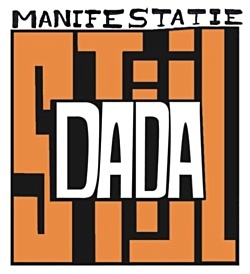 Over de tentoonstelling: De tentoonstelling DaDa Remake is samengesteld uit foto’s die gemaakt zijn door studenten en scholieren. De jonge kunstenaars deden mee aan het Dada-fotografie project ‘Hoe bluf ik mijn weg door fotografie?’, een project over Dada en fotografie in het kader van de manifestatie 100 jaar Dada. Zij lieten zich inspireren door een iconische foto, denk aan de Beatles op Abbey Road van Iain MacMillan of Maxima van Erwin Olaf. Museumdocent is Mariëlle Vos en gastcurator van de tentoonstelling is Hester Witteveen, student kunstgeschiedenis aan de RUG.
Over de tentoonstelling: De tentoonstelling DaDa Remake is samengesteld uit foto’s die gemaakt zijn door studenten en scholieren. De jonge kunstenaars deden mee aan het Dada-fotografie project ‘Hoe bluf ik mijn weg door fotografie?’, een project over Dada en fotografie in het kader van de manifestatie 100 jaar Dada. Zij lieten zich inspireren door een iconische foto, denk aan de Beatles op Abbey Road van Iain MacMillan of Maxima van Erwin Olaf. Museumdocent is Mariëlle Vos en gastcurator van de tentoonstelling is Hester Witteveen, student kunstgeschiedenis aan de RUG.
Tentoonstelling DaDa Remake
Datum: 20 juni t/m 28 augustus 2016
Plaats: Sûnenz, Burgemeester Wuiteweg 140B, Drachten
Openingstijden: ma-zo, 9:00 – 20:00 uur
Tijdschrift Dada in Stijl te koop
DADA in Stijl is alweer de derde uitgave van het tijdschrift waarin jonge vormgevers, schrijvers en kunstenaars hun talenten laten zien. Dit doen ze in de vorm van foto’s, collages en artikelen. Het tijdschrift bestaat uit bijdragen van onder meer Natasha Taylor, Tjy Liu, Bert Jansen, Hein Kockelkoren, studenten TURBO Groep van AvP en ROC Friese Poort.
Het tijdschrift is verkrijgbaar voor € 6,50
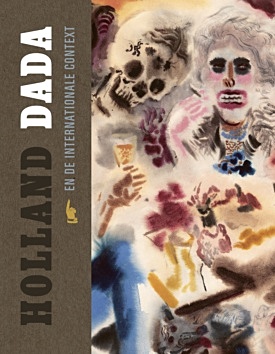 Nieuwe publicatie
Nieuwe publicatie
Holland Dada en de internationale context
door Annemieke Keizer-Sloff e.a.
€29,90
Paperback
Nederlands
Pagina’s 288
Auteur: Paulo Martina, Annemieke Keizer-Sloff, Dick Adelaar, Emanuel Overbeeke, Hester Jenkins, K. Schippers, Niels Bokhove, Remco Heite
ISBN: 9789056153748
In Holland Dada en de internationale context gaan verschillende dada-deskundigen, waaronder schrijver/dichter K. Schippers, in op de betekenis van de beweging voor de beeldende kunst, muziek en typografie. De internationale context staat hierbij centraal. De steden die in het boek aan bod komen zijn: Zürich, New York, Berlijn, Hannover, Keulen, Parijs, Antwerpen en Drachten.
Ondanks haar kleine omvang neemt Drachten zeker geen onbelangrijke plaats in de geschiedenis van dada in. Zo bestond er een intensief contact tussen Theo van Doesburg en Kurt Schwitters en de Drachtster broers Evert en Thijs Rinsema. Evert Rinsema was dichter, zijn broer Thijs kunstschilder. Door de vriendschap met de gebroeders Rinsema kwam Theo van Doesburg in contact met de gemeente-architect Cees Rienks de Boer. Van Doesburg ontwierp voor 16 middenstandswoningen aan de Torenstraat en de Landbouwwinterschool een kleuroplossing. Ook ontwierp hij op verzoek van De Boer glas-in-loodramen voor de Christelijke ULO en de Landbouwwinterschool.
In april 1923 ‘eindigde’ in Drachten de internationale dada-beweging met een solo-optreden van Kurt Schwitters. Tot die tijd shockeerde hij zijn publiek graag met abstracte poëzie en een onverstaanbaar mengsel van diverse talen en dierengeluiden, maar vanaf dat moment stapte Schwitters over op sprookjes en voordrachten over moderne kunst. Het optreden in Drachten was de laatste in zijn soort en daarmee een keerpunt in de gehele dada-beweging.
# Meer informatie op website Museum Dr8888
Museum Dr8888
Museumplein 2,
Drachten
fleursdumal.nl magazine
More in: - Book News, Antony Kok, Art & Literature News, Dada, Dadaïsme, De Stijl, Doesburg, Theo van, Evert en Thijs Rinsema, Kok, Antony, Kurt Schwitters, Marcel Duchamp, Piet Mondriaan, Schippers, K., Schwitters, Kurt, Theo van Doesburg, Theo van Doesburg
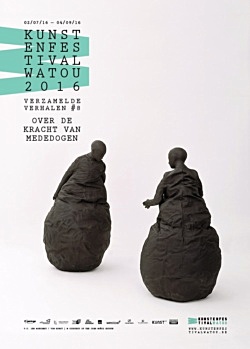 36ste editie Kunstenfestival Watou
36ste editie Kunstenfestival Watou
Verzamelde verhalen #8
De kracht van mededogen
(…over identiteit, diversiteit en mededogen)
2 juli 2016 – 4 september 2016
We leven in een fantastische wereld.
Maar: er is werk aan.
Het gaat snel. Meedogenloos snel. Voor velen te snel.
En we zijn met veel, heel veel.
Veel eenlingen met recht op een eigen identiteit. Veel verschillen die zorgen voor vermoeiende maar boeiende en levensnoodzakelijke diversiteit.
Een allegaartje van mensen en meningen dat al duizenden jaren zichzelf in stand houdt en heruitvindt.
We zoeken elkaar op: in het echt, digitaal en virtueel. Om niet alleen te zijn.
Ook onze taal- en beeldvorming is een amalgaam.
Gelukkig een overbrugbare barrière: we zoeken immers ons.
We vormen groepen van gelijkgestemden: lokaal, regionaal, nationaal en internationaal. We kunnen niet zonder de anderen.
We vertrouwen én wantrouwen.
We nemen stellingen in.
Willen geloven in iets.
Hangen denkwijzen aan.
Moeten er soms voor vluchten.
Soms worden we fanatiek.
Zonder mededogen leidt dit naar conflict.
Zonder mededogen verliezen we onze menselijkheid.
We zullen mededogend zijn of niet zijn.
De geschiedenis liegt niet.
“Als de wereld begrijpelijk was, zou er geen kunst bestaan.” schreef Albert Camus. Op Kunstenfestival Watou vormen dichters, schrijvers, kunstenaars en andere creatieve geesten een uitzonderlijke ontmoetingsplaats.
Reflecteer zodat we met z’n allen kunnen groeien. Ontdek hen met mededogen.
Geniet ervan.
Wij zien u graag.
Jan Moeyaert
Intendant vzw Kunst / Stichting IJsberg vzw
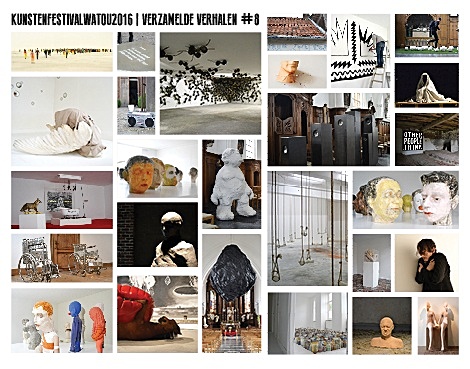
Elke zomer opnieuw slaat het Kunstenfestival van Watou haar tenten op in het gelijknamige kunstdorpje aan de Franse grens. Dichters en beeldend kunstenaars, aanstormend talent en gevestigde waarden, kunstwerken uit binnen- en uit buitenland strijken er neer en vormen een bijzonder kunstenparcours. Het dorp is de setting en biedt een tiental karakteristieke locaties als tentoonstellingsruimte: een voormalig klooster, een oude boerderij of de kelder van een brouwerij. De wisselwerking tussen die verrassende, nostalgische ruimtes met hedendaagse beeldende kunst en poëzie zorgt telkens weer voor een unieke kunstbeleving. Zomeren in Watou is dan ook prikkelen en onthaasten tegelijk. Kleine momenten van gelukzaligheid.
Iedere editie van het Kunstenfestival kadert in een ander thema, waarrond intendant Jan Moeyaert en poëziecurator Willy Tibergien beeld en taal samenbrengen. Schrijvers, dichters en kunstenaars palmen gedurende een zomer het dorp in en bieden de bezoekers een caleidoscoop aan inzichten en perspectieven rond een bepaald onderwerp.
In het verleden organiseerden we onder meer tentoonstellingen over de liefde in al haar facetten, over toevallige ontmoetingen, blijvende herinneringen en het geluk in overvloedige tijden. Verhalen verzamelen, noemen we het. Van harte welkom om ze te komen lezen!
ZOMERZINNEN
Onder de noemer Zomerzinnen staan iedere zaterdag, zondag en feestdag andere evenementen op de agenda die graag een brug slaan naar verschillende kunstdisciplines. In de ticketprijs zit telkens de toegang tot een van de evenementen van die dag inbegrepen. Meer informatie over elk event kan je vinden door hiernaast het evenement aan te klikken.
Let wel! De plaatsen zijn steeds beperkt. Reserveren kan enkel de dag zelf aan het onthaal.
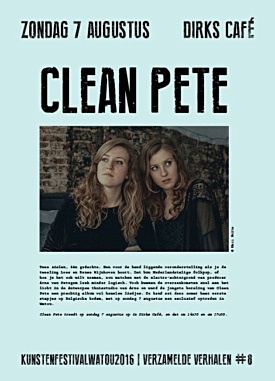 zondag 10 juli
zondag 10 juli
Antigone, Molenbeek
maandag 11 juli
High Tea & Poetry
zaterdag 16 juli
Maarten Inghels (lezing)
zondag 17 juli
Michaël Vandebril
donderdag 21 juli
Er loopt een dichter in de tuin
zaterdag 23 juli
Barbara Rottiers, Inne Eysermans & Katharina Smets
zondag 24 juli
Wouter Deprez & Ruben Focketyn
zaterdag 30 juli
Roy Aernouts & Stijn Dierckx
zondag 31 juli
De Sprekende Ezels
zaterdag 6 augustus
Joke Devynck & Delphine Lecompte
Kristof Devos
zondag 7 augustus
Clean Pete
zaterdag 13 augustus
Frederik Willem Daem
zondag 14 augustus
Peter Holvoet-Hansen
Frederik Lucien De Laere
maandag 15 augustus
Parlevink
zaterdag 20 augustus
Lize Spit & Flore Deman
zondag 21 augustus
Wim Helsen
zaterdag 27 augustus
Sabien Clement & Mieke Versyp
zaterdag 3 september
Stefan Hertmans & Jelle Van Riet
zondag 4 september
afsluitende verrassing
DE MUUR
De Muur is een groeiende verhaallijn doorheen de festivalperiode die steeds andere kunstenaars samenbrengt om een gesamtkunstwerk te maken voor Kunstenfestival Watou. Een illustrator of beeldend kunstenaar gaat daarbij samen met een schrijver of dichter de uitdaging aan om op een aantal dagen tijd een uniek, maar vluchtig kunstwerk te maken op een muur in het Festivalhuis. Het resultaat wordt gedurende een weekend aan het publiek tentoongesteld om daarna opnieuw te verdwijnen, waardoor de Muur telkens weer verandert in een blank canvas voor het volgende duo. Met dit project brengen tien kunstenaarsduo’s u deze zomer woord en beeld in symbiose, maar dan voor korte duur. Ze brengen u de schoonheid van de vergankelijkheid.
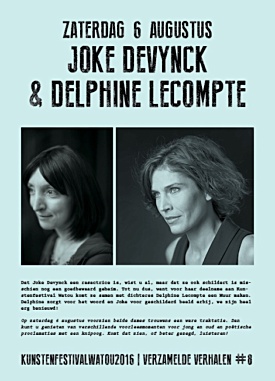 9 juli & 10 juli
9 juli & 10 juli
Max Temmerman & Tom Liekens
16 juli & 17 juli
Michaël Vandebril & Kristof Devos
23 juli & 24 juli
Barbara Rottiers, Inne Eysermans & Katharina Smets
30 juli & 31 juli
Roy Aernouts & Stijn Dierckx
6 augustus & 7 augustus
Joke Devynck & Delphine Lecompte
13 augustus & 15 augustus
Frederik Willem Daem & Athos Burrez
20 augustus & 21 augustus
Lize Spit & Flore Deman
27 augustus & 28 augustus
Sabien Clement & Mieke Versyp
HET KINDERPARCOURS
Kunstenfestival Watou, dat is kunst kijken en poëzie proeven op spannende locaties, ook voor ons jongste publiek. Het centrale thema van de tentoonstelling, de kracht van mededogen, keert dan ook terug in het kinderparcours. Aan de hand van een op maat gemaakte wandeling worden kinderen aangezet om na te denken over vragen als “Wie ben ik? Wie ben jij? En is er ook een wij?”
Om het educatieve luik wat extra kleur te geven, gingen we deze keer in zee met illustrator Kristof Devos, die met zijn uit de band swingende spring-in-’t-veld Miep onze jongste bezoekers zal begeleiden bij hun wandeling doorheen het Kunstenfestival. Via een app en/of een doe-boekje geeft Miep allerhande opdrachten door om uit te voeren, zodat onze jongste bezoekers de kunstwerken en poëzie op een speelse manier kunnen ontdekken. Wie de opdrachten tot een goed einde brengt, komt bovendien ook steeds dichterbij de Schat van Vlieg…
De Zoektocht van Vlieg op Kunstenfestival Watou is vanaf 2 juli gratis beschikbaar via de app OJOO. Ze kan op voorhand of ter plaatse gedownload worden en leidt schattenjagers via een GPS-signaal doorheen het parcours.
Het doe-boekje kost 3 euro en kan je kopen aan het onthaal in het Festivalhuis.
Kunstenfestival Watou 2016 vindt plaats van
2 juli tot en met 4 september.
Open
woensdag tot zondag van 11u tot 19u
maandag – dinsdag gesloten, behalve op feestdagen
Prijs
€15 op weekend- of feestdagen
€12 op weekdagen
€10 voor jongeren – 25 jaar
gratis voor kinderen tot 12 jaar
Het onthaal bevindt zich dit jaar opnieuw in het Festivalhuis, Watouplein 12, op het marktplein naast de Spar.
Adres
Watouplein 12
8978 Watou
Poperinge (België)
# meer info op website kunstenfestival watou
fleursdumal.nl magazine
More in: - Book Lovers, Art & Literature News, Historia Belgica, Lecompte, Delphine, POETRY ARCHIVE, THEATRE, Watou Kunstenfestival

Gustave Flaubert
(1821 – 1880)
La Mort d’Emma
Éperdu, balbutiant, près de tomber,
Charles tournait dans la chambre.
Il se heurtait aux meubles, s’arrachait les cheveux, et jamais le pharmacien n’avait cru qu’il pût y avoir de si épouvantable spectacle…
Puis, revenu près d’elle, il s’affaissa par terre sur le tapis, et il restait la tête appuyée contre le bord de sa couche à sangloter.
—
Ne pleure pas ! lui dit-elle.
Bientôt je ne te tourmenterai plus !
—
Pourquoi ?
Qui t’a forcée ?
Elle répliqua : —
Il le fallait, mon ami. —
N’étais-tu pas heureuse ?
Est-ce ma faute ?
J’ai fait tout ce que j’ai pu pourtant !
—
Oui…, c’est vrai…, tu es bon, toi !
Et elle lui passait la main dans les cheveux, lentement.
La douceur de cette sensation surchargeait sa tristesse ; il sentait tout son être s’écrouler de désespoir à l’idée qu’il fallait la perdre, quand, au contraire, elle avouait pour lui plus d’amour que jamais ; et il ne pouvait rien ; il ne savait pas, il n’osait, l’urgence d’une résolution immédiate achevait de le bouleverser.
Elle en avait fini, songeait-elle, avec toutes les trahisons, les bassesses et les innombrables convoitises qui la torturaient.
Elle ne haïssait personne, maintenant ; une confusion de crépuscule s’abattait en sa pensée, et de tous les bruits de la terre, Emma n’entendait plus que l’intermittente lamentation de ce pauvre cœur, douce et indistincte, comme le dernier écho d’une symphonie qui s’éloigne.
Gustave Flaubert poésie
fleursdumal.nl magazine
More in: Archive E-F, Archive E-F, Gustave Flaubert
Museum De Fundatie Zwolle t/m 18 september 2016
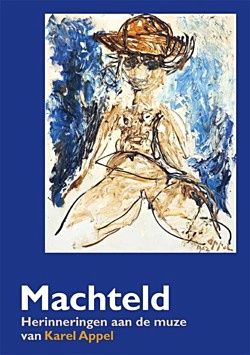 In 1955 ontmoette Karel Appel zijn muze. Machteld was een jonge vrouw met stijl, een mannequin die van boeken hield, een anker in zijn turbulente leven. In 1970 overleed ze, slechts 35 jaar oud.
In 1955 ontmoette Karel Appel zijn muze. Machteld was een jonge vrouw met stijl, een mannequin die van boeken hield, een anker in zijn turbulente leven. In 1970 overleed ze, slechts 35 jaar oud.
Focuspunt in de kabinettentoonstelling ‘Machteld – De muze van Karel Appel’ is het monumentale portret dat Appel in 1962 van zijn grote liefde schilderde. Daarnaast is L’Oiseau Barbare uit 1961 te zien, een beschilderde olijfstronk in de vorm van een vogel. Beide werken komen uit de collectie van de architect Karel Sijmons en zijn vrouw Tony. Aan de hand van brieven en foto’s krijgt de bezoeker een uniek inzicht in de bijzondere relatie van het echtpaar met Karel en Machteld Appel. Dochter Babette Cremer-Sijmons bracht de documenten samen in een boek en haalde herinneringen op aan de vrouw die ook haar inspireerde.
Over Karel en Machteld Appel verscheen een publicatie van de hand van Babette Sijmons: “In de turbulente sfeer [rond Karel Appel], met woest paletmes en kwast was altijd de stille aanwezigheid te vinden in de vorm van Machteld, die – als zij niet hoefde te werken als vaste mannequin van Cristobal Balanciaga – een eiland van kalmte uitstraalde. Onverstoorbaar op de achtergrond las zij haar boeken en gaf af en toe de schilder zacht commentaar.”
De Muze van Karel Appel
door Babette Sijmons
64 pagina’s, 17 x 24 cm,
35 illustraties in kleur en 22 in zwart-wit,
Nederlands/Engels
ISBN 978 94 6262 073 5
€ 17,50
Museum de Fundatie
Blijmarkt 20
8011 NE Zwolle
Telefoon: 0572 388188
info@museumdefundatie.nl
# Meer informatie via website Museum de Fundatie
fleursdumal.nl magazine
More in: - Book News, Art & Literature News, Exhibition Archive, Karel Appel, The Ideal Woman
Thank you for reading Fleurs du Mal - magazine for art & literature